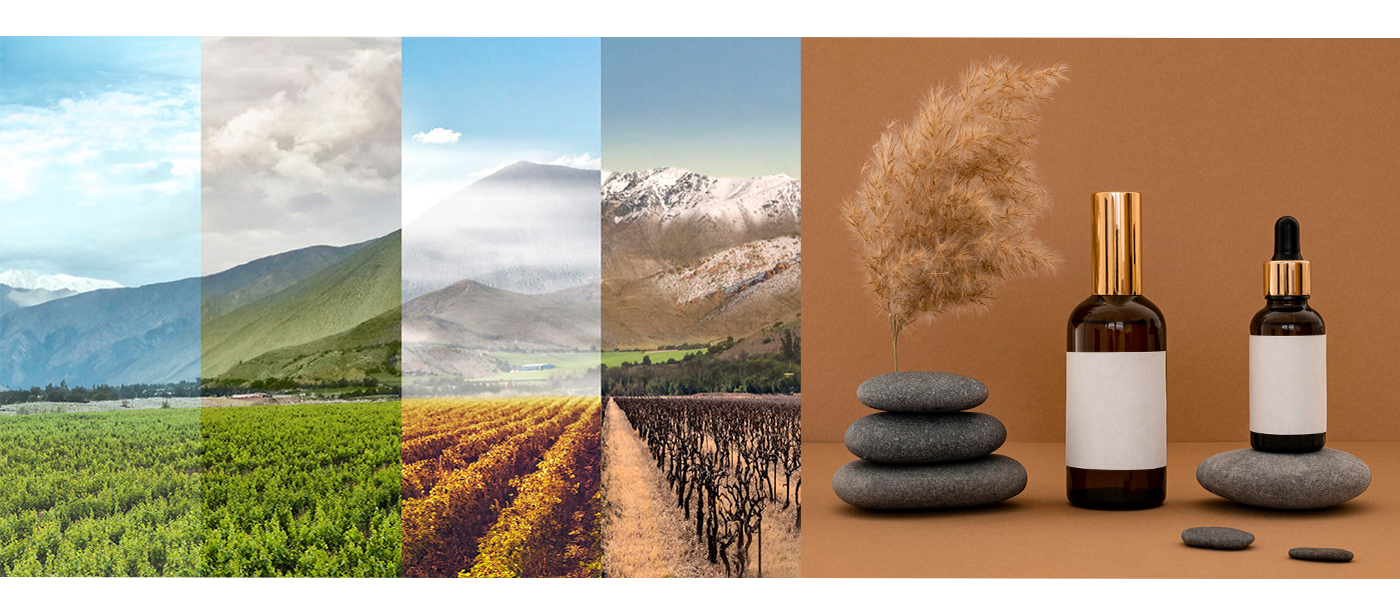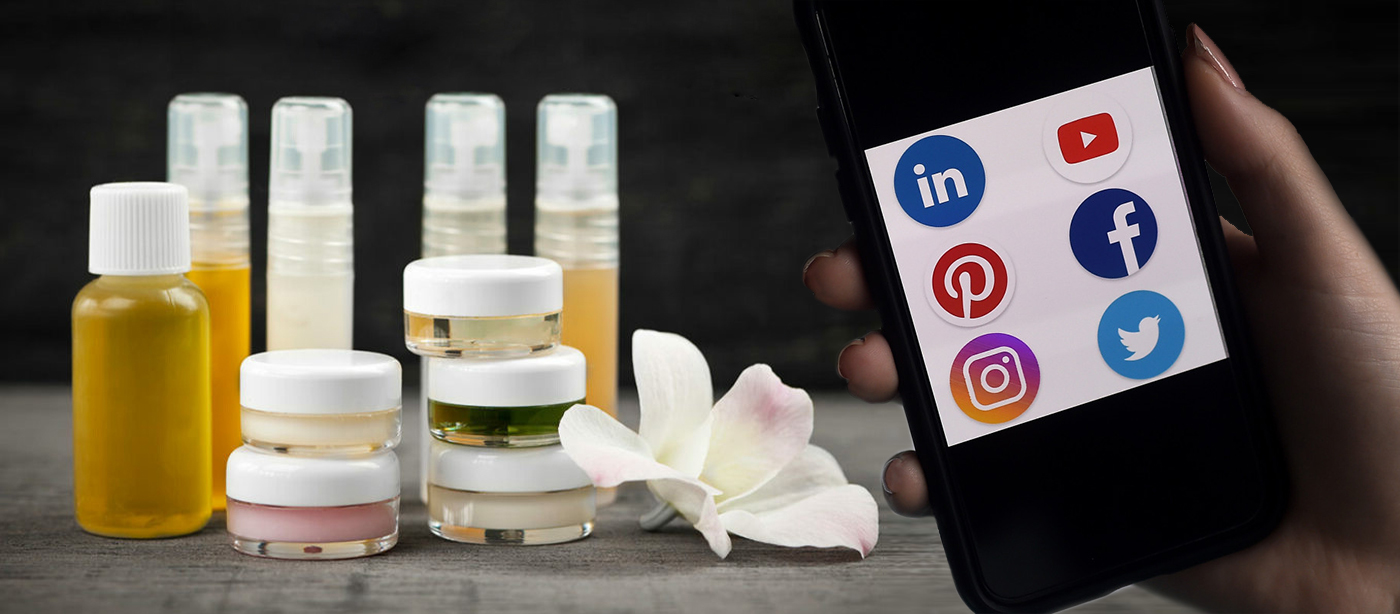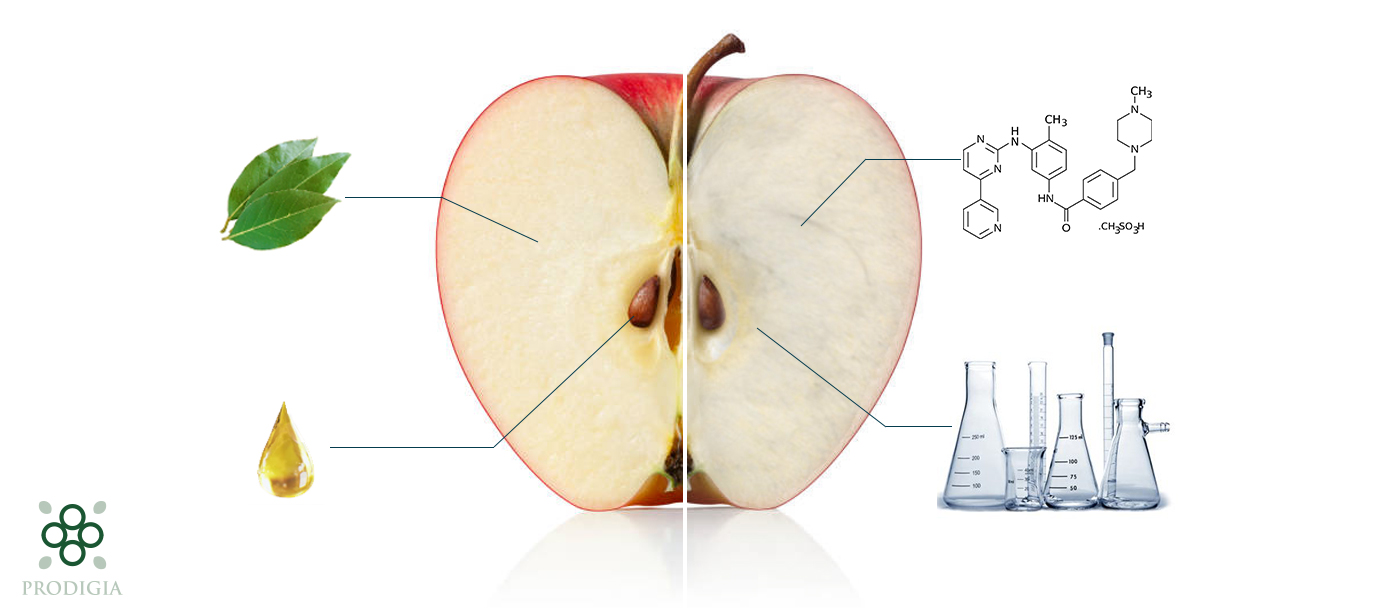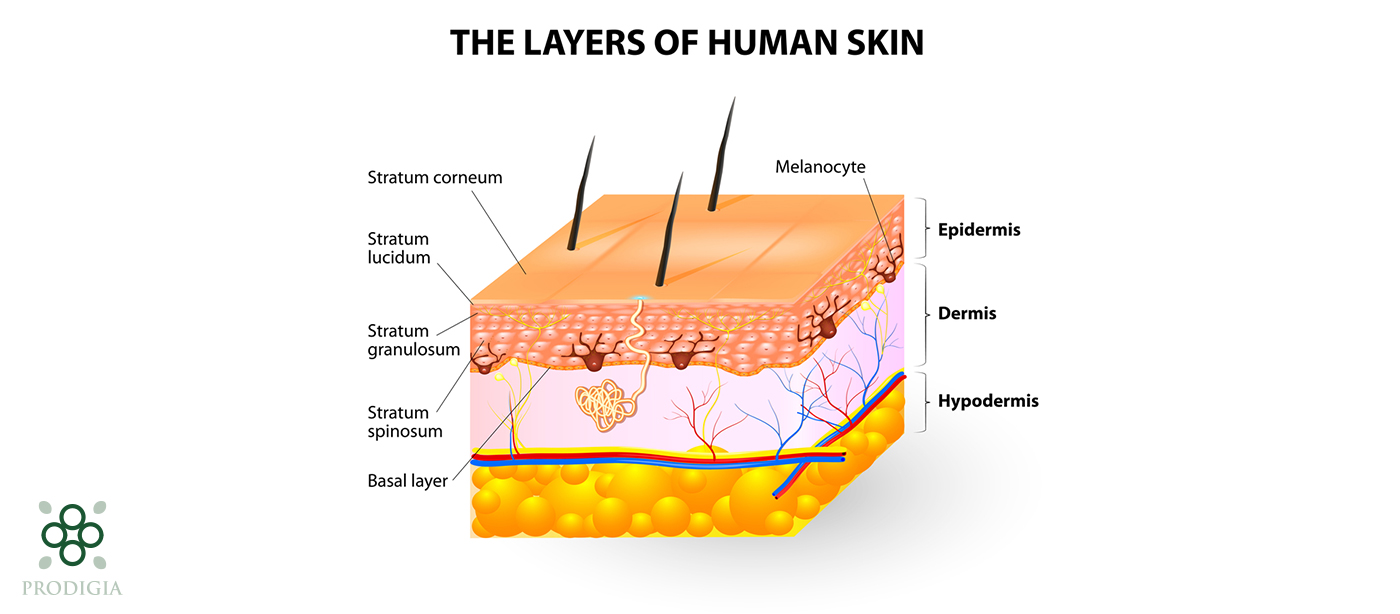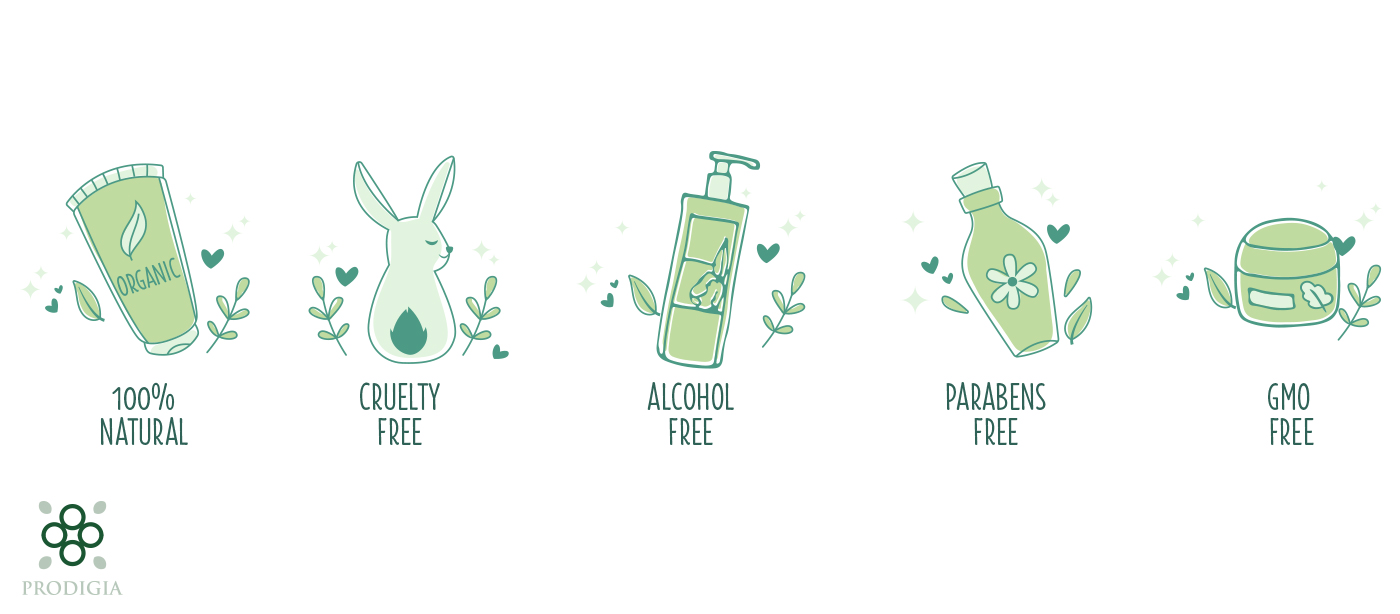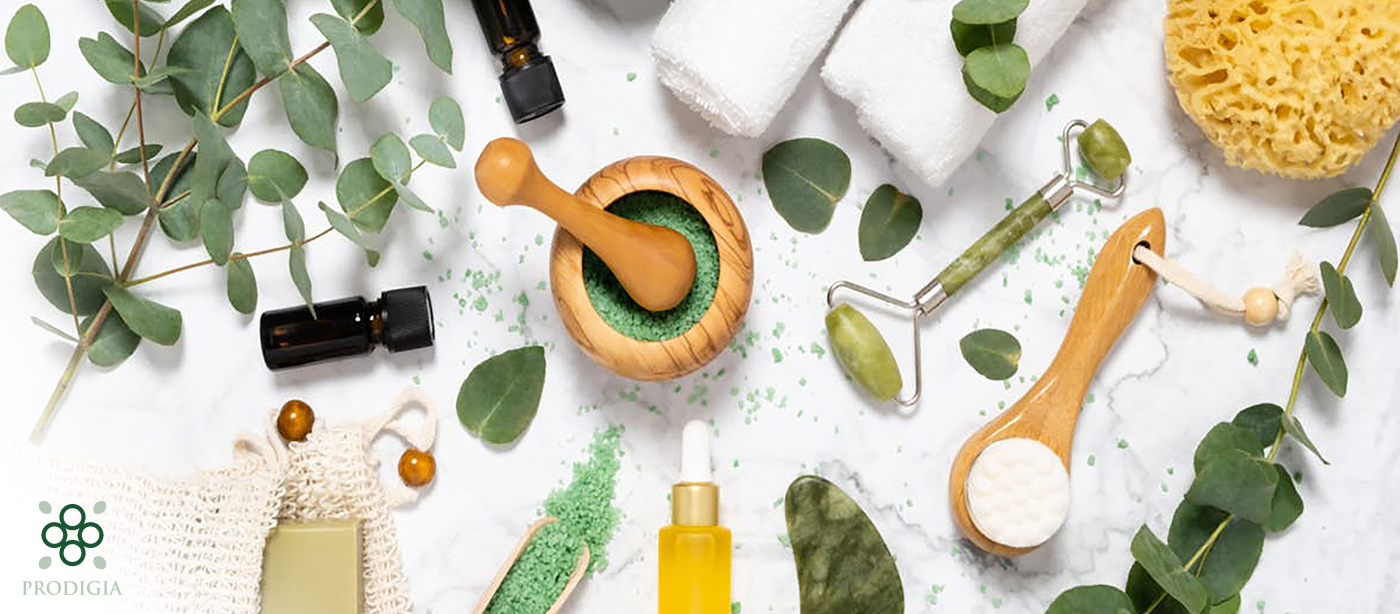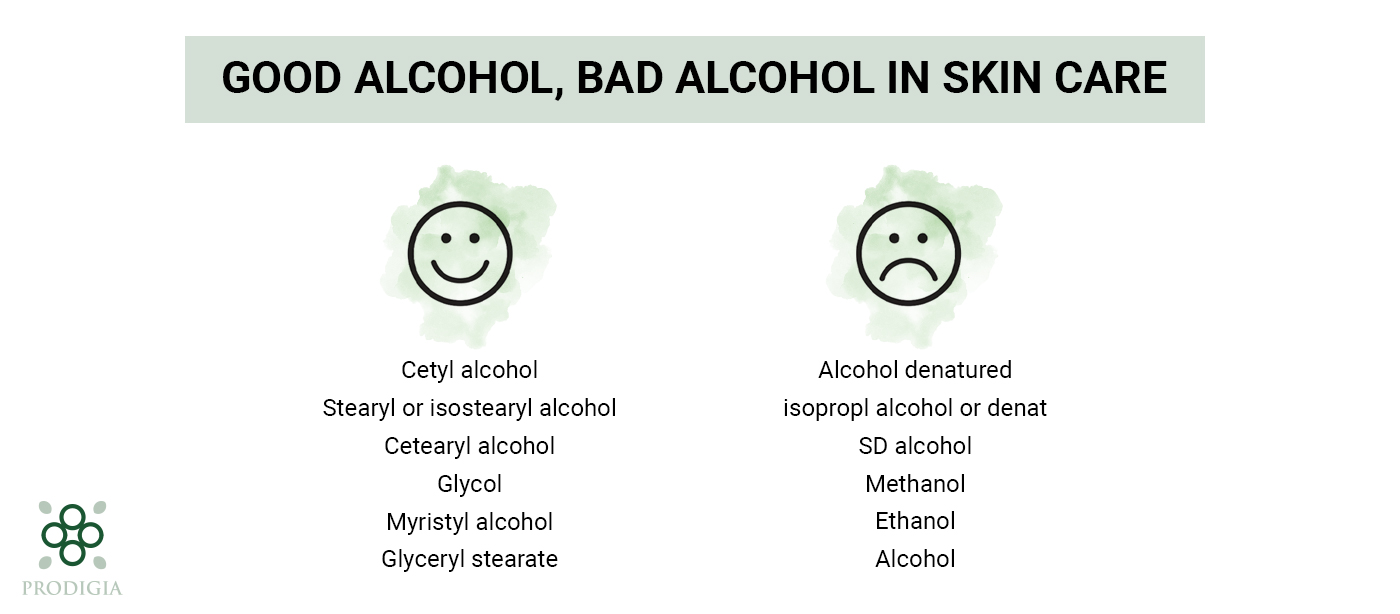The creators of natural cosmetics and their followers are increasingly thinking about the changes and adaptations that climate change implies for each person’s skin depending on their environmental and geographical conditions. These thoughts gave birth to Geoskincare, a recent and rising beauty trend promoting personal care products that have the power to address the unique challenges posed by different regions and climates. What are the effects of the environment on the health and appearance of the skin? And what strategies to preserve this balance? The answers to these questions and more in this article …
Continue reading →Support
Men are increasingly interested in skin and beard care products without perfumes, alcohol or dyes, with particular attention paid to natural ingredients. Focus on current trends and markets to win, what are the benefits of natural skin care and men’s beard? What trends and what future perspectives? The answers are in this article …
Continue reading →The art of caring for your hair is much more than just a daily routine. It is a holistic approach that begins with understanding your hair type and its specific needs. In this article, we will guide you through the different steps to achieve perfect hair, from selecting the right shampoo to protecting against external aggressors, including hydration, repair and maintenance. Your hair deserves the best, and we’re here to help you cherish it the way it deserves:
Continue reading →Beauty trends, once dictated by industry big names and fashion shows, have undergone a major transformation thanks to the influence of social media. Platforms like Instagram, TikTok and YouTube have radically changed the way beauty trends emerge, spread and are adopted globally. How far does social media influence the promotion and sale of cosmetic products? What is the role of influencers and online reviews? And what importance should be given to digital marketing? The answers in this article …
Continue reading →Natural cosmetics enthusiasts are more and more passionate about products that are gentle on their skin and on the environment. These products contain ingredients of plant, animal or mineral origin. However, it is essential to understand that all supposedly natural ingredients are not always what they seem. In this article, we’ll explore natural cosmetic ingredients in depth, highlight the controversies surrounding them, and guide you to informed choices for a more natural and responsible beauty routine:
1. Understanding natural ingredients in cosmetics:
Natural ingredients provide many perceived benefits in cosmetic products. Their plant or mineral origin can bring specific benefits to the skin, such as hydration, soothing or radiance. Natural cosmetics enthusiasts are attracted to these ingredients because they are perceived to be gentler, more environmentally friendly and healthier for the skin.
However, it is essential to remain vigilant about the transparency of brands and to verify claims of naturalness. Unfortunately, some products may claim to be “natural” while still containing synthetic or chemical ingredients. It is therefore important to read labels carefully, look for certifications and learn about the reputation of the brand to ensure the true naturalness of the products.
Essential oils, plant extracts and vegetable butters are some of the most popular natural ingredients. These ingredients are often used effectively in natural cosmetics, providing their nourishing, antioxidant and regenerating properties to the skin. However, they should be used with caution, adhere to the recommended doses and be alert to any potential allergic reactions.
2. Controversial cosmetic ingredients:
Unfortunately, some commonly perceived natural cosmetic ingredients are not as natural as they appear, and can occasionally pose health and environmental concerns.
Thickening agents such as hydroxyethyl cellulose is a good example. Another great example is behentrimonium methosulfate. It is used as an antistatic agent and, sometimes, as a disinfectant, and is of vegetable origin. It most often comes from rapeseed oil. But it cannot be considered a natural ingredient. The reason is simple: it undergoes some processing transformations that are considered synthetic before being used in cosmetics.
The reasons preventing ingredients from being considered natural is usually due to the manufacturing processes used that are considered synthetic.
Among the often debated ingredients we find parabens, sulfates, silicones and synthetic dyes, among others. Parabens, for example, are widely used preservatives, but their endocrine-disrupting potential raises concerns. Sulfates, such as sodium lauryl sulfate, are harsh foaming agents that can dry out the skin and hair. Silicones, on the other hand, can give a smooth vanishing feel to the skin and hair, but some variations are known to be endocrine-disrupting as well as bad for the environment. As such, ingredients like cyclopentasiloxane are now forbidden in rinse-off products, due to their negative environmental consequences.
It’s important to be aware of these controversies and make informed choices by learning about the ingredients in the products we use. Knowing and understanding these ingredients allows us to select cosmetic products that match our values and specific needs.
3. Labels and certifications for natural products:
To help consumers distinguish genuinely natural products, various labels and certifications exist. These certifications guarantee that the products meet specific standards in terms of naturalness, origin of ingredients, manufacturing methods and environmental impact.
Here are some of these labels: the COSMOS label, the Ecocert private standard, and other country-specific certifications. Discover Prodigia’s article on Certifications and labels: a guarantee of quality for your brand of natural cosmetics. We explain to you the criteria and standards they require to obtain their certification, which will allow you to more easily identify the products that meet your expectations in terms of naturalness, and to have a better idea of the making of your own natural cosmetics.
4. Make informed choices when it comes to natural cosmetics:
To make informed choices, you must read labels and ingredient lists carefully. The list of ingredients is often presented in detail, with the most common ingredients first. Take the time to understand technical terms and research ingredients that seem questionable or controversial.
It is also important to research and learn more about the ingredients used in cosmetic products. Finally, we advise you to find truly natural alternatives. With a little research, you are able to discover and adopt ethical brands that favor natural and sustainable ingredients over certified organic products. Making informed choices will allow you to take care of your skin while respecting your health and the environment.
At Prodigia, our formulas are composed of at least 95% natural ingredients and are developed in accordance with Cosmos standards.
Need advice? Contact Prodigia!
Cosmetic products are an integral part of our daily lives, but few consumers are aware of the mechanisms that allow the skin to absorb them. In this article, we will explain these mechanisms and we will shed light on the factors influencing the absorption of cosmetics by the skin, and finally we will explore some safe and legal perspectives:
1. Understanding the absorption of cosmetics by the skin:
The skin: a protective barrier and an organ of absorption: More than a simple envelope, the skin is an organ in its own right. Its mass and surface area are the largest in the body. It protects other organs from infection, injury and harmful sun rays. It is therefore a real interface with the outside world.
What are the barriers of the skin? The skin consists of three main layers: the epidermis, the dermis and the hypodermis. The outermost layer of the skin, called the epidermis, forms a protective barrier against external influences. The outer layer of the epidermis, called the horny layer or stratum corneum, is made up of dead cells contained in epidermal lipids and is covered by the hydrolipidic film which includes the acid mantle. It is the epidermal lipids that are responsible for binding moisture and creating a skin permeability barrier, thus preventing bacteria and viruses from penetrating to the surface of the skin. Thus, the epidermis simultaneously plays the role of water, physical, chemical and antimicrobial barrier.
The absorption of cosmetics at the level of the stratum corneum: The stratum corneum or the stratum corneum, is the outermost cell layer of the epidermis, the most superficial tissue of the skin.
According to the 500 Dalton rule, the molecular weight of a compound must be less than 500 Dalton to allow skin absorption at the level of the stratum corneum. Larger molecules cannot pass through the corneal layer.
The different skin absorption routes of cosmetics:
Initially, the active ingredient must absolutely bind to the stratum corneum by dissolving in its surface hydrolipidic film. Then it crosses this barrier in two possible ways: absorption either by the stratum corneum or by the cutaneous appendages. In the majority of cases, these two passageways are used simultaneously
The passage through the stratum corneum: The stratum corneum is a multi-layered area made up of dead cells. The passage through the stratum corneum can be carried out by the trans-cellular and intercellular route.
- The transcellular route: The active ingredients contained in beauty products pass from cell to cell provided that they are small in size OR that they are hydrophilic, i.e. they have an affinity for the water present in the well hydrated stratum corneum leading to make them soluble.
- The intracellular pathway: Between cells, the pathway most often used. The lipophilic active ingredients (which retain fatty substances) circulate in the inter-lipid cement which ensures the cohesion of the cells of the horny layer, then in the interstitial liquid which fills the spaces between the cells of the deeper layers of the skin.
The passage through the cutaneous annexes: The pathway through the cutaneous annexes corresponds to passage through the pilosebaceous follicles (trans-follicular pathway), and much more rarely through the ducts of the eccrine sweat glands which secrete sweat. Although this pathway is in the minority, it presents a non-negligible possibility of storage and dissemination. The trans-follicular pathway allows molecules to penetrate to the reticular dermis.
2. Factors influencing the absorption of cosmetics by the skin:
Knowing how a beauty product is absorbed by the skin can largely prevent irritant reactions. Here are six factors that influence the absorption of active ingredients by the skin:
- In people over 60, hydrophilic active ingredients penetrate less because their skin is dehydrated.
- The site of application: The absorption of cosmetics by the skin is not the same in all parts of the body. For the same compound applied to two different anatomical sites, the penetration will be different. The thinner the stratum corneum (eyelids), the greater the penetration. On the contrary, the thicker it is (palms of the hands and soles of the feet), the less the penetration is important.
- The condition of the skin: The thicker and oilier it is, the less permeable it is. Thoroughly cleanse your skin and exfoliate to facilitate the penetration of cosmetic products. Irritated skin will be more permeable. The state of hydration of the skin is essential, the more it is hydrated the more it is permeable.
- The size and nature of the molecule that must cross the skin barrier: The smaller the molecule, the more easily it will penetrate. A hydrophilic molecule will tend to take the transcellular route and will only be able to cross if the skin is well hydrated.
- The form of administration of cosmetic products: This is the galenic form which corresponds to the final physical appearance of the product as it will be used (lotion, gel, mousse, emulsion, patch, etc.). The skin penetration of an active molecule varies according to the galenic form in which it is presented.
- Methods of application: The thickness of the layer of product applied to the skin and the frequency of application have an influence on the penetration of active ingredients. Indeed, the application of a thick layer of cream has an occlusive effect and will therefore improve absorption by the skin, this is the principle of masks. Similarly, applying a product to a larger area of skin promotes penetration.
At Prodigia, our formulas are composed of at least 95% natural ingredients and are developed in accordance with Cosmos standards.
Need advice? Contact Prodigia!
In a field as competitive as natural cosmetics, and with increasingly knowledgeable customers, the “claims” or statements displayed on your product labels should attract potential customers while being accurate, non-deceptive, and relevant. What do we mean by “claims”? How can they be decoded and formulated correctly? And what regulations govern them? The answers to all your questions are in this article:
1. What are "claims"?
According to the guidelines for substantiating cosmetic product claims by Cosmetics Europe, the terms “claims” or “product claims” refer to “texts, names, trademarks, images, or other figurative signs” used for the labeling, marketing, and advertising of cosmetic products.
“Claims” play a crucial role in communicating the benefits of cosmetic products. They allow manufacturers to highlight specific features of their products and convince consumers that using these products will bring them positive results. “Claims” are usually formulated in an attractive and persuasive manner to generate interest among consumers and encourage them to make a purchase.
Here are some common examples of “claims” found in the cosmetic industry:
Benefit claims:
- Anti-aging: These products are presented as having the ability to reduce signs of aging, such as wrinkles, fine lines, and loss of skin elasticity.
- Hydrating: Hydrating products claim to provide intense and long-lasting hydration to maintain soft, smooth, and supple skin.
- Brightening: These products claim to lighten or even out the skin tone, reduce dark spots or imperfections, and give a brighter complexion.
“Free from” claims: They allow for an informed decision for a specific target group or groups of end users. They must be precise, non-deceptive, and relevant. They should not involve an ingredient already prohibited by regulations or an ingredient that is not necessary for the product’s formulation:
- Paraben-free: This claim indicates that the product does not contain parabens, which are chemical preservatives often associated with health concerns.
- Fragrance-free: Fragrance-free products are formulated without the addition of synthetic fragrances, making them suitable for sensitive or reactive skin.
- Allergen-free: These products are designed to minimize the risks of allergic reactions and are formulated without ingredients known to cause skin allergies.
There are others, such as “acetone-free” in nail polish for users wishing to avoid its particular odor, or the claim “free of animal-derived ingredients” in products intended for vegans.
2. How to decode "claims"?
First and foremost, it is crucial to carefully read labels and product descriptions to be able to detect claims and then decode them. It is also important to formulate them correctly when designing product labels and packaging.
Here are some commonly used “claims”:
- “Clinically tested”: This generally means that the product has been subjected to laboratory tests or tests on human volunteers, but it does not necessarily guarantee positive results.
- “Visible results”: This implies that the results will be visible to the naked eye, but it can vary from person to person.
- “Advanced formula”: This term suggests that the product uses an innovative formulation, but it does not provide specific indications of the actual benefits of the product.
How to present “claims” in an authentic and convincing manner? To gain consumer trust, it is essential to present your claims honestly and transparently. Highlight your natural ingredients and their benefits: emphasize the natural ingredients you use and explain how they contribute to the benefits of your products. Use precise descriptions to communicate the effectiveness of these ingredients and rely on scientific evidence such as clinical studies or independent research. This will enhance the credibility of your claims and reassure your customers. Lastly, avoid exaggerated terms such as “miraculous” or “instant results” and instead use realistic and factual terms to describe the benefits of your products.
3. Regulations on "claims" in cosmetics
Regulations on “claims” in the cosmetic industry are essential to protect consumers from misleading or false claims. Here are some important international control organizations and regulations in this field:
- Food and Drug Administration (FDA): The FDA is the regulatory body in the United States responsible for overseeing cosmetic products. Although the FDA does not require pre-market approval for cosmetic products, it monitors claims to ensure they are truthful and do not deceive consumers.
- European Food Safety Authority (EFSA): EFSA is the regulatory body of the European Union responsible for the safety assessment of food products and food supplements. When cosmetic products contain ingredients that are also used in food, such as vitamins and minerals, EFSA can evaluate claims related to these ingredients.
- European Regulation (EC) No. 1223/2009: This regulation governs the marketing of cosmetic products in the European Union. It establishes specific requirements for cosmetic claims, including truthfulness, accuracy, evidence, and compliance with good practices.
The regulations impose guidelines and limitations on cosmetic claims to prevent deceptive practices. Here are some of them:
- Truthfulness and scientific substantiation: Claims must be truthful and supported by appropriate scientific evidence.
- Non-medicalization of cosmetic products: Claims must not claim to cure diseases or treat medical conditions.
- Avoidance of deception: Claims must not mislead consumers. They should not exaggerate the effects of products or create unrealistic expectations.
Avoid falling into the trap of “misleading advertising“! This expression refers to “any advertising that, in any way, including its presentation, misleads or is likely to mislead the persons to whom it is addressed or whom it reaches and which, due to its misleading nature, is likely to affect their economic behavior or, for these reasons, harm or is likely to harm a competitor.”
At Prodigia, our formulas are composed of at least 95% natural ingredients and are developed in accordance with Cosmos standards.
Need advice? Contact Prodigia!
The beauty industry is reinventing itself to address consumer concerns that are increasingly revolving around sustainability and environmental consciousness. The concept of Conscious Beauty is emerging, highlighting values such as sustainability, the use of natural and organic ingredients, ethics, and fair trade. What parameters should your brand integrate to operate in conscious beauty? And how important is it to make informed choices for our well-being and that of the planet? Find the answers in this article:
1 - "Conscious Beauty", sustainable and ethical:
What is this ? Conscious beauty goes beyond aesthetic appearance to emphasize products and practices that respect the health of the skin, body, and our environment. This involves prioritizing formulations and processes that are nature-friendly, as well as positioning your brand as one that adopts a holistic approach to sustainability.
The sustainability challenge: The beauty industry has a significant impact on the environment. It is therefore crucial to promote sustainable practices, such as reducing carbon emissions, preserving natural resources, and promoting biodiversity. Conscious brands are committed to minimizing their ecological footprint while offering high-quality products.
Ethics and fair trade: Conscious beauty also encompasses values of ethics and fair trade. Brands committed to this approach ensure fair and safe working conditions for their employees, support local communities, and encourage fair business practices throughout their supply chains.
It is also crucial to avoid false claims and misleading advertisements of “clean” or “green” products. Dishonest practices such as the use of harmful ingredients and animal testing should be avoided.
2 - What conscious aspects should you prioritize when designing your products?
- Natural and organic ingredients: Natural and organic beauty products are made from plant-based ingredients, free from harmful chemicals. They offer skincare benefits without compromising our health or the environment. When you opt for products based on natural and organic ingredients, you enable your customers to maintain skin balance while supporting biodiversity-friendly agriculture.
You can source your natural raw materials from Prodigia.
- Sustainable packaging: Sustainable packaging plays a crucial role in conscious beauty. By adopting recyclable, biodegradable, and reusable materials, your brand contributes to reducing plastic waste and preserving natural resources. More and more companies are investing in minimal, innovative, and environmentally friendly packaging solutions.
- Certifications and labels: Certifications and labels play a key role in conscious beauty, providing consumers with reliable guidance in choosing environmentally friendly and health-conscious products. Examples of certifications include organic labels, cruelty-free certifications, and recyclable packaging.
Discover our article on certifications and labels: a guarantee of quality for your natural cosmetics brand.
3- What is the future for conscious beauty?
The informed consumer holds the power to make conscious choices: Consumers now have a crucial role to play in promoting conscious beauty. By researching brands, certifications, and labels, they can make informed decisions and choose products that align with their values and needs. By supporting conscious brands, they encourage positive change in the industry.
The challenges of adopting sustainable practices in the beauty industry: While significant progress has been made, the beauty industry faces challenges in its journey toward sustainability. Seeking sustainable sourcing, consumer education, and implementing environmentally friendly practices require ongoing efforts and collaboration among stakeholders. This should not discourage your brand from pursuing sustainability—it’s important to start somewhere.
The future of conscious beauty, emerging trends: The conscious beauty industry is evolving rapidly, with the emergence of new trends such as refillable products, sustainable technological innovations, and recycling initiatives. The future of conscious beauty promises a holistic approach that integrates sustainability, innovation, and well-being.
Conscious beauty is more than just a fleeting trend. It is a movement that is gaining popularity and contributing to creating a more sustainable future for the beauty industry. At Prodigia, our formulas are composed of at least 95% natural ingredients and are developed in accordance with Cosmos standards.
Need advice? Contact Prodigia!
Silicones have long been used in the cosmetic industry to give cosmetic products a smooth and silky texture. Following concerns about their environmental impact and their effect on health, a more natural alternative has been developed: silicone-like ingredients. Here’s everything you need to know about silicones and silicone-like ingredients:
I. Silicones
What are silicones exactly?
Silicones are synthetic polymers that have unique properties such as water resistance and their ability to form a protective layer on the skin or hair. They are used to improve the texture, softness, and shine of cosmetic products, but they are also known for their ability to reduce frizz, seal in moisture, and extend the wear of makeup.
How are they perceived in the cosmetic industry?
Among consumers who prefer more natural skincare and haircare products, silicones often have a bad reputation.
For manufacturers, silicones were revolutionary in the 1950s due to the novelty they offered in terms of sensory experience. However, since then, the industry has progressed towards silicone-free technology. Technological advancements have paved the way for new categories of sensory emollients. Today, durable plant-based emollients without silicone are preferred.
Concerns about their environmental impact and their effect on health have led to the implementation of European bans on silicones D4, D5, and D6. In certain circumstances, cyclomethicones are also prohibited by retailers and deemed undesirable by consumer groups.
Why is it bad in reality?
Silicones can be harmful to the environment when they are discharged into wastewater and oceans, where they can persist for years. In addition, some types of silicones can cause skin irritation and health problems such as allergies or migraines in some people.
II. Silicone-like ingredients
Scientific advancement for natural solutions
Fortunately, scientific advancements have led to the development of silicone-like ingredients, natural ingredients that mimic the properties of silicones without harmful effects on the environment or health. These ingredients are often derived from plant sources such as coconut or jojoba oil and are completely biodegradable.
Their origin
Silicone-like ingredients are derived from plants such as sugar cane, corn, rice, and beet. They are produced from natural ingredients, which means they are biodegradable and sustainable.
Their positive effects on skin and hair
Silicone-like ingredients have positive effects on the skin and hair, just like silicones. They provide a smooth and silky texture to cosmetic products while helping to seal in moisture and reduce frizz. Skincare and haircare products containing silicone-like ingredients are also less likely to cause skin irritations or allergic reactions.
At Prodigia, our formulas are at least 95% natural and are developed in accordance with Cosmos standards. Naturally, we have incorporated silicone-like ingredients into the formulation of some of our skincare and haircare products to give them a luxurious texture without the harmful effects of silicones. Our Brightness & Shine Hair Serum and our Day and Night Moisturizing Creams contain natural ingredients such as jojoba oil and argan oil, which help nourish and moisturize the skin and hair without causing irritation.
Need advice? Contact Prodigia!
When it comes to natural cosmetics, many people think that all alcohols are bad for the skin. However, this is not entirely true. While some alcohols can dry out and irritate the skin, others can be beneficial. What are the different types of alcohols that exist in natural cosmetics? Find all the answers to your question in this article:
It is important to understand that not all alcohols are created equal. There are two main types of alcohols commonly used in cosmetics: fatty alcohols and simple alcohols.
Fatty alcohols:
Fatty alcohols, such as cetearyl alcohol and stearyl alcohol, are derived from natural sources such as coconut. These alcohols are often used as emollients and thickeners in natural cosmetics. They help to moisturize the skin and improve the texture of products such as lotions and creams. Fatty alcohols are considered safe and non-irritating, even for people with sensitive skin.
Here are examples of “good” alcohols or fatty alcohols : “Cetyl alcohol”, “Stearyl or isostearyl alcohol”, “Cetearyl alcohol”, “Brassica alcohol ”, “Myristyl alcohol”, and “Glyceryl stearate”.
Simple alcohols:
Simple alcohols, on the other hand, can dry out and irritate the skin. These alcohols, such as denatured alcohol and isopropyl alcohol, are commonly used in mainstream cosmetics and can strip the skin of its natural oils. They are generally not recommended for use in natural cosmetics.
Here are examples of simple alcohols: “Alcohol denatured”, “Isopropl alcohol or denat”, “SD alcohol”, “Ethanol”, and “Alcohol”.
When formulating your natural cosmetics, it is important to prioritize fatty alcohols over simple alcohols. This way, the formulated product will be gentle and non-irritating to the skin.
At Prodigia, we only use premium quality fatty alcohols.
Here is a chart including examples of both families of alcohols:
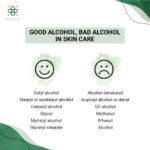
Need advice? Contact Prodigia!

